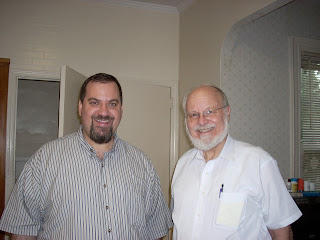Why Shlomo didn't understand the Red Heifer
 In Bamidbar Rabba, Chukat 3, it recounts instances of Shlomo's Hamelech's (King Solomon's) deep understanding of everything, reflecting his exceptional wisdom. But at the end of all this, it quotes Shlomo himself saying that despite all his attempts at studying it, he could not understand the nature of Para Aduma, the Red Heifer, which was burned to ash, after which the ashes were used for ritual purification (Bamidbar 19).
In Bamidbar Rabba, Chukat 3, it recounts instances of Shlomo's Hamelech's (King Solomon's) deep understanding of everything, reflecting his exceptional wisdom. But at the end of all this, it quotes Shlomo himself saying that despite all his attempts at studying it, he could not understand the nature of Para Aduma, the Red Heifer, which was burned to ash, after which the ashes were used for ritual purification (Bamidbar 19).Which, of course, doesn't mean that Shlomo couldn't understand it. He presumably would have, as a king at a time when these laws were paramount. What the midrash really means is that they (the authors of Bamidbar Rabba), living 1,000 years later than Shlomo at the very least, and perhaps much later, were no longer comfortable with the idea.
The authors of the Midrash were certainly comfortable with the idea of korbanot (sacrifices) in general. But Parah Adumah is different. It's not really a korban in the sense we think of it:
It is entirely burned to ash. While the Korban Olah is also entirely burnt, there are several differences. The blood of the Olah was sprinkled on the corners of the mizbe'ach (the alter). And the valuable skin was saved and given to the kohanim (priests).
Furthermore, the Para Aduma was burnt OUTSIDE the camp, not on the mizbe'ach at all. The Torah tells us (Devarim/Deuteronomy 19:5) that it is to be burnt up entirely, “her skin, and her flesh, and her blood, with her dung, shall be burnt.” (Though some blood is sprinkled in the direction of the Mishkan (Tabernacle), in the previous verse).
The purpose of sacrifices, at least on the face of it, notwithstanding later Maimonidean interpretations, is to bring gifts to God, so He will enjoy the “re’ach nichoach”, the aromatic fragrance. But the Para Aduma is burnt up OUTSIDE of the Mishkan or Mikdash (Temple). Its only purpose is utilitarian, for the use of the ashes in purification rituals.
What I’d like to suggest is that the authors of the midrash contained in Bamidbar Rabba recognized this utilitarian nature. Regular korbanot? Those they could understand, even in a world where animal sacrifices were rare or nonexistent – they were analogous to prayer, and therefore the “pagan” feel was ameliorated by the fact that it was direct Avodat Hashem, worship of God.
Furthermore, all other animal sacrifices served in some way to feed or provide for human beings. Even the Olah resulted in valuable animal skins for the kohanim. This served an important role in providing sustenance to the nation in a time of centralized worship.
But Para Aduma, although necessary for the functioning of priestly ritual, served no direct higher purpose like the other korbanot. Instead, it was just used for its “magical” properties. And it didn’t provide any food or other tangible benefits like the other korbanot.
So the authors of the midrash, trying to understand a sacrifice that was not a sacrifice, and which provided none of the traditional benefits to the people, wrote their feelings into a story about how the wisest man of them all, the legendary Shlomo, who could even talk to the animals, nevertheless could not puzzle out the rationale for Para Aduma.

Comments
Post a Comment